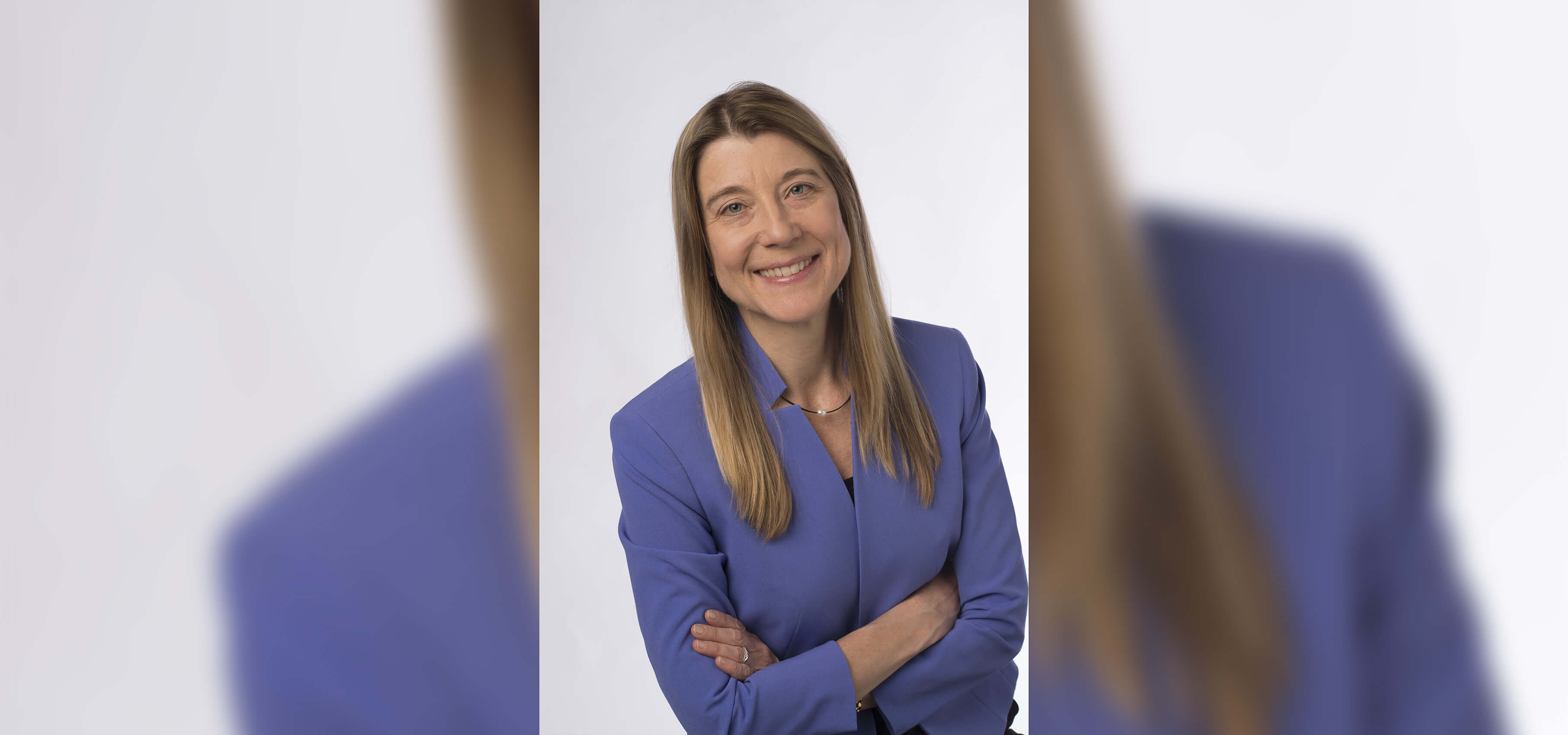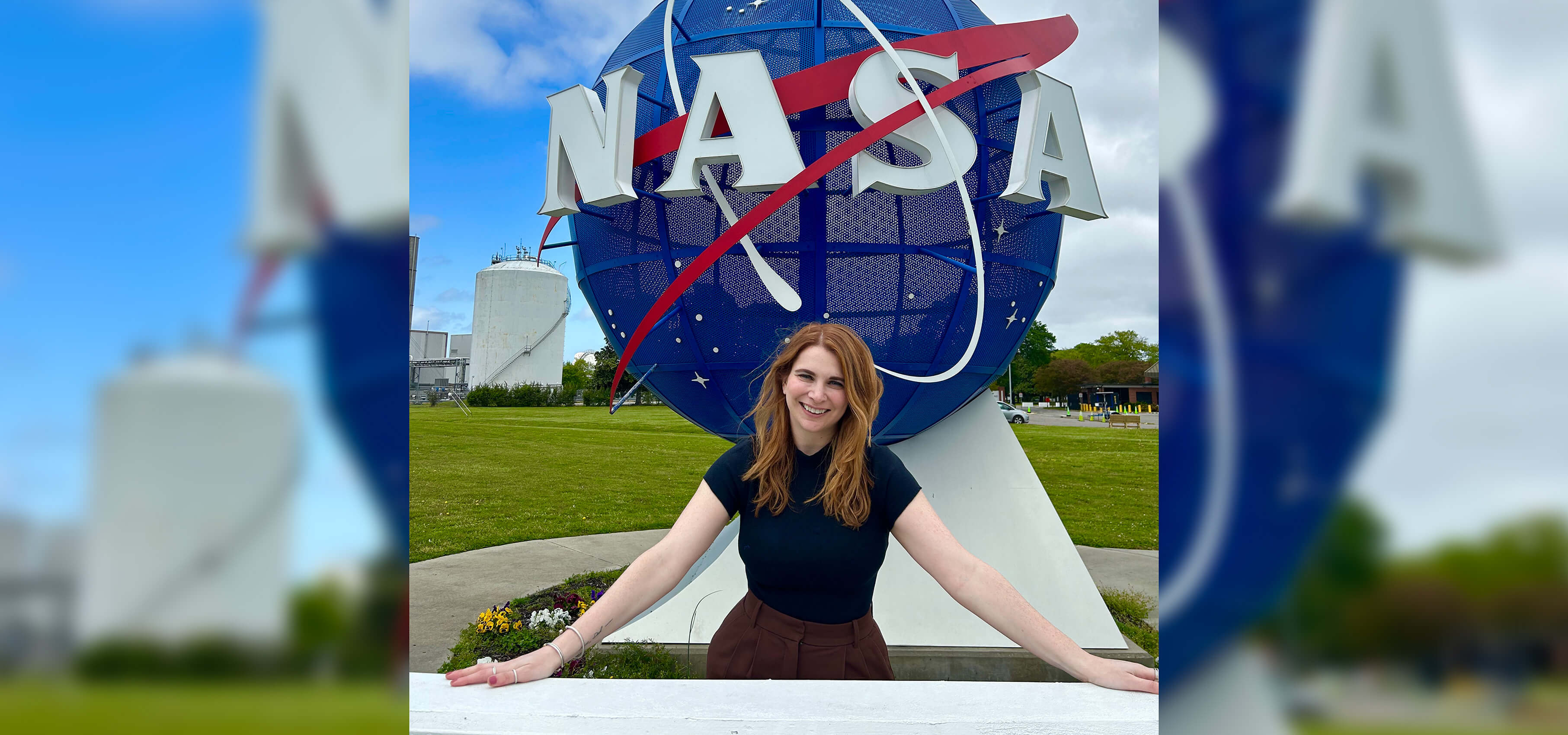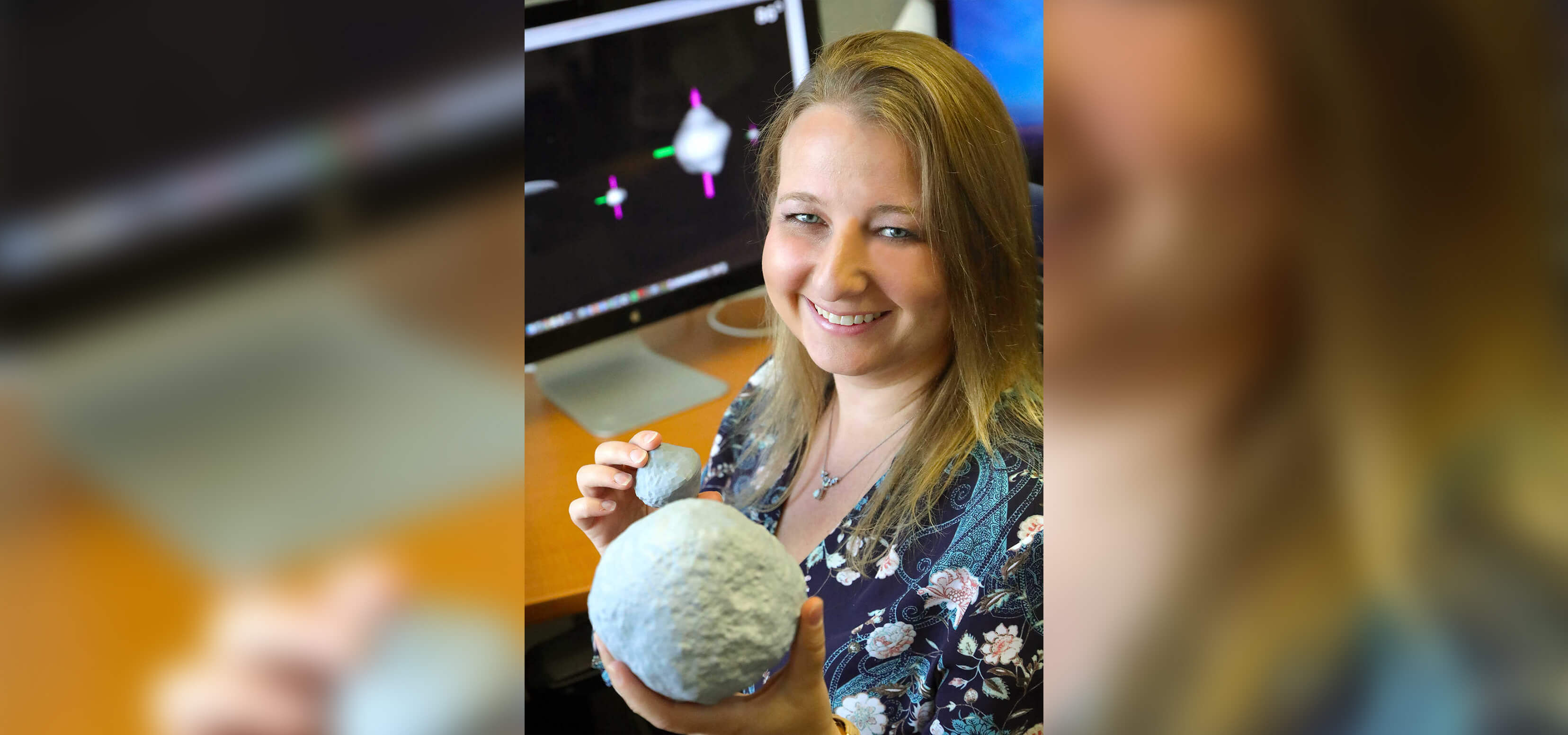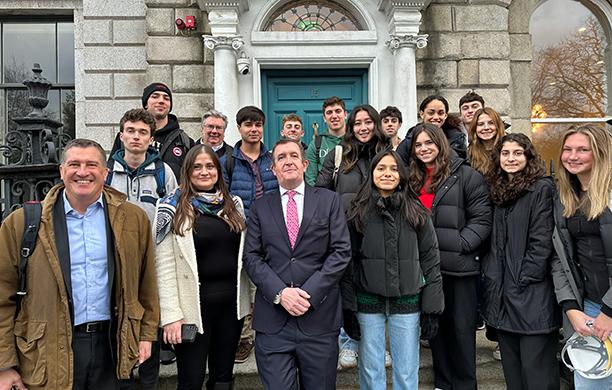When fielding firsthand accounts from alumni, we often hear recurring themes in their Lehigh experiences. Yet the way those experiences shape each student’s path is uniquely personal.
For women pursuing careers in STEM, those experiences can be transformative. Here are a few flight paths of alumnae who have landed in aerospace — spanning defense, engineering, research, and cost analysis.

Employer: Lockheed Martin
Position: Program Manager
What first sparked your interest in aerospace?
Back when I took (what was then) AP Physics B in high school, the General Relativity topic was my favorite. I greatly enjoyed learning about the mechanics of space and how it translates into our modest life on Earth. It was humbling to employ the work of curious scientists over recent centuries who helped to give humans a glimpse into the beginnings of our universe.
What’s one moment that defined your path?
Although I was already pursuing my aerospace minor at the time, having a former astronaut for a professor in Terry Hart '68 ’88H ’27P was inspiring. His Spacecraft Design course was my first taste of the systems engineering process followed by NASA and the Department of Defense, so when I began my career at NAVAIR, I already knew about preliminary design reviews, critical design reviews, and test readiness reviews.
I also have fond memories of the Aircraft Design course in which we designed and built a foam aircraft with propulsion. My group’s plane was the only one that had a successful flight and landing at Goodman campus on a beautiful spring morning!
Who or what at Lehigh inspired you to push the limits on your career path?
Professor Pat Costa ’13P [professor of practice in industrial and systems engineering] greatly helped me to gain confidence in myself regarding career readiness and success. His dedication to the Integrated Business and Engineering program made me realize how beneficial it is to broaden your fields of study and work hard on developing soft skills. His leadership and trust gave me the self-assurance to do anything, from working on the bond trading floor of a mutual fund firm at the fresh age of 18 years, to being an executive office intern at a transportation technology company, to ending up with the [Department of Defense] and now Lockheed Martin.
Because of my IBE degree and Professor Costa’s guidance, I was able to transition from college student to intern to systems engineer to program manager with ease (a couple of times!)
What advice would you give the next generation aspiring to work in the field?
Get familiar with systems engineering. This field is employed as standard practice in the industry, and coupling systems engineering knowledge with another engineering degree is invaluable to both public and private employers.
What excites you most about the future of your field?
The Department of Defense is historically slow-moving, but given the fast pace of today’s real-world events and threats on our nation, the industry is starting to change as well. There is more of an emphasis now on swift reaction to the many mutable international conflicts, real-time data gathering and analysis, and rapid development and delivery of solutions for our warfighters. I’m quite excited to see how this shift will impact technology in the larger aerospace field.

Employer: The Boeing Company
Position: Principal Senior Technical Fellow
What first sparked your interest in aerospace?
Honestly, I wasn’t actually interested in aerospace as a student. It was definitely not a field or career path that I thought about while at Lehigh for my undergraduate education or during my Ph.D. studies later.
I was approached by Boeing when I was relatively new in my first “real” job following graduate school. I had very little idea of what chemical engineers do in the aerospace industry, but I agreed to an interview and was taken on a tour of a 737 final assembly and the R&D facilities in the Seattle area. It just blew me away — the size of the airplanes, the complexity of the production system, the exciting challenges of developing and qualifying new materials and processes for aircraft. That was 28 years ago, and I’ve never looked back.
What’s one moment that defined your path?
There have been a few of those moments! Going way back, I remember very clearly my high school chemistry teacher told me that with an engineering or science degree, I could do anything I wanted for a career. That set me on the path to chemical engineering and Lehigh, the foundation for everything that followed. The tour of that 737 final assembly was the moment that changed my career path to aerospace.
Later on, my first invention disclosures and patents solidified my love of R&D and my commitment to a technical career pathway rather than management. The defining moment of my career was last year when I found out I had been elected to the National Academy of Engineering — thank you, Lehigh, I couldn’t have done it without you!
Who or what at Lehigh inspired you to push the limits on your career path?
I had many fantastic professors at Lehigh in many departments. In chemical engineering, the faculty were uniformly excellent. I thrived under their teaching and encouragement! Two that particularly stand out for me are [the former dean of the college of engineering] John Chen, who gave me the opportunity to do undergraduate research in his lab, and [former chairman of the department of chemical engineering] Leonard Wenzel, who provided much wise advice and encouragement about graduate school. Fred Fowkes in chemistry introduced me to the world of colloid science, which became my research focus in graduate school.
Two classes that shaped me were an engineering ethics class and a Russian literature class in my spring semester freshman year (proving that I could be an engineer and enjoy reading and writing too!) And I would be remiss not to mention my Class of ’89 chemical engineering cohort — love them! We inspired and supported each other throughout a pretty challenging curriculum.
What advice would you give the next generation aspiring to work in the field?
Aerospace needs a wide range of knowledge and expertise, so you can work in the field with any STEM degree, not just aerospace engineering. Take my example: I started off not knowing what chemical engineers do in aerospace, and I’ve learned that nearly everything we build requires chemical processes. I advise students to choose the discipline that they are most passionate about, and that can definitely be their pathway to a career in aerospace.
Also keep in mind that airplanes, space vehicles, satellites — these are complex structures and systems designed and built by large interdisciplinary teams, so it is useful to practice teamwork with people outside of your own major.
What excites you most about the future of your field?
The aerospace field is full of exciting goals. Sustainable aviation, lightweight materials, automated manufacturing of large-scale structures, autonomous vehicles, going to Mars ... and more. Big, audacious, complex challenges — it’s a playground for engineers!

Employer: The Johns Hopkins University Applied Physics Laboratory (APL)
Position: Cost & Systems Analyst
What first sparked your interest in space exploration and aerospace?
During my time at Lehigh, I studied math as an undergraduate and statistics as a graduate student. I wasn’t exactly sure what I wanted to do after graduation, but I went to the Lehigh career fair as a graduate student and knew I wanted to talk APL. I wasn’t previously familiar with APL, but after doing some research, I wanted to learn more about the largest university-affiliated research center that has managed, built, and operated many NASA missions, including MESSENGER [Mercury Surface, Space Environment, Geochemistry, and Ranging], New Horizons, Parker Solar Probe, DART [Double Asteroid Redirection Test], and IMAP [Interstellar Mapping and Acceleration Probe].
Not long after the career fair, I traveled down to Maryland for my interview and got the job offer. I hadn’t specifically set out to work in aerospace, but the chance to be part of NASA space science mission concepts and NASA mission development was too exciting to pass up. It was one of those times where the job just sort of found me — right when I wasn’t sure what would come next.
What’s one moment that defined your path?
There wasn’t a single lightning-bolt moment. My path has been shaped by a series of defining experiences. Over the past eight years, I’ve worked as a cost analyst on NASA proposals across all four Science Mission Directorate divisions: Astrophysics, Heliophysics, Earth Science, and Planetary Science — estimating full lifecycle mission costs and crafting compelling narratives that show APL can deliver within cost caps ranging from $50 million to over $1 billion.
I’ve also had the opportunity to support missions in development, including serving as a fault management systems engineer on NASA’s first planetary defense mission, DART. It was the first mission to demonstrate that a spacecraft could intentionally impact an asteroid and alter its trajectory.
Most recently, I served as the cost analyst for the IMAP’s critical design review, one of NASA’s most consequential decision gates before a mission moves into the testing and integration phase. Even though my impact feels small in the grand scheme of things, it’s exciting to be part of advancing space science.
Who or what at Lehigh inspired you to push the limits on your career path?
It was my extracurricular experiences at Lehigh that truly inspired me to push the limits of my career path. As an undergraduate, I was involved in campus life — serving on the leadership team of Alpha Gamma Delta, acting as president of the peer health advisors, and contributing to various Student Affairs committees through the Office of the Dean of Students. As a graduate student, I had the opportunity to work as the graduate assistant to former President John Simon ’19P.
Across all of these roles, I developed my leadership skills and tapped into my creative side, constantly coming up with innovative ideas to enhance the student experience. Those experiences taught me that while I enjoy math and analytical work, I’m most fulfilled when I’m also challenging the status quo.
Today, in the space science cost-estimating community, I’ve built a reputation for identifying novel research areas and leading conversations on difficult, often politically sensitive topics. That mindset of creating new ideas and making space for challenging discussions was shaped at Lehigh.
What advice would you give the next generation aspiring to work in the field?
My biggest piece of advice is that you don’t need to be an aerospace engineer to work in space science and exploration. The field needs mathematicians, statisticians, financial managers, project managers, scientists, and problem-solvers of all kinds. Every mission concept we propose and every mission we develop is built on a foundation of diverse perspectives, with some of the most impactful work happening behind the scenes.
Being a woman brings a different perspective. Being a young professional brings a different perspective. Being a mathematician or statistician brings a different perspective. Being a non-aerospace engineer brings a different perspective. All of the varying perspectives matter and are essential to the success of space exploration.
What excites you most about the future of your field?
We’re living through a pivotal moment in space exploration history. Commercial space is flourishing as access to space is more available than ever before. However, it’s not without its challenges. As the NASA budget faces potential reductions and space science missions are constrained, the NASA space science community is coming together to find the best ways to maximize our opportunities — to explore the origins of the universe, search for life, and protect our planet — goals not pursued by the private sector.
I’m honored to be part of a community that continues to push the boundaries of knowledge, even during tough times and in the face of uncertainty. I’m excited for the possibility of new ideas that will shape the future of space science and exploration.

Employer: Southwest Research Institute
Position: Lead Scientist and Instrument Deputy Principal Investigator on NASA’s Europa Clipper and New Horizons missions
What first sparked your interest in aerospace?
When I was in second grade, I read a book called I Can Read About the Sun and Other Stars and just became obsessed with all things space. I was incredibly fascinated by the planets in our solar system, especially the images of Jupiter, Saturn, Uranus, and Neptune that were taken by the Voyager spacecraft. I loved learning facts about the planets that I could share with everyone around me (whether they wanted to hear those facts or not), and I would write non-fiction books to capture that trivia I had learned.
What’s one moment that defined your path?
In 2008, I participated in a Research Experience for Undergraduates program funded by the National Science Foundation at the Arecibo Observatory. Some may recognize the observatory from the movie Contact. During that summer in Puerto Rico, I was hands-on involved in radar observations of asteroids and was able to see how scientists analyze data and conduct research. It solidified my interest in becoming a research scientist and helped focus my studies on objects within our solar system.
Who or what at Lehigh inspired you to push the limits on your career path?
I started at Lehigh as an astrophysics major. Joining the Society for Physics Students was a great way to connect with the other students and a way for us to teach one another in order to pass some of the more difficult physics courses. Professor [M. Virginia] McSwain encouraged me and others to get involved in research, which is what ultimately helped me get into graduate school. Professor [Gary] DeLeo introduced me to the world of science outreach, including a program where I worked with fourth grade students in preparation for them to meet with Dr. Sally Ride, the first U.S. woman in space. Outreach has been a really important and fulfilling part of my career ever since.
What advice would you give the next generation aspiring to work in the field?
Follow your passions and allow those passions to be broader than the technical science or engineering subjects. At Lehigh, my minor in Latin American studies complemented my career in ways I would not have expected. My fluency in Spanish was very helpful when I worked at telescopes in Chile and in Puerto Rico, and I now collaborate on NASA missions with people from around the world. Many courses outside of your physics, math, and engineering classes will develop key skills like communication and collaboration that are really important for a career in STEM.
What excites you most about the future of your field?
The current search for life within and beyond our solar system. I am part of NASA's Europa Clipper mission that will assess whether the liquid water ocean that is hiding beneath the icy shell of Jupiter's moon, Europa, could support life. New, more powerful telescopes continue to be built to focus on the possibility of life on planets around distant stars. The question of whether we are alone in the universe is one that has been asked across the globe throughout human existence. I really hope to see us answer that question in my lifetime.


